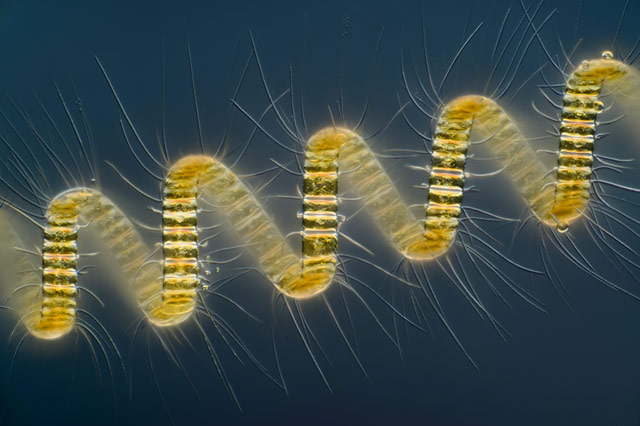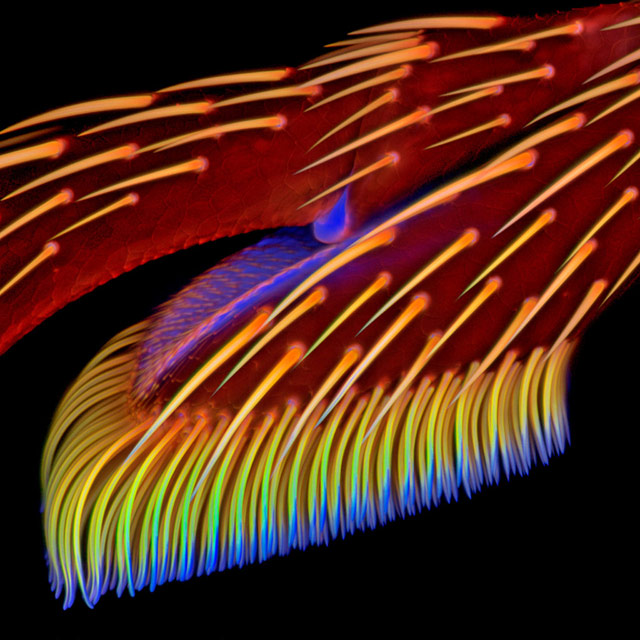Helix-Shaped Plankton Portrait Wins 'Small World' Contest

An up-close portrait of a corkscrew-shaped plankton, a peek into a painted turtle's eye and a magnified view of a marine worm are among this year's winners of a photography contest that honors all things microscopic.
The prizing-winning images of Nikon's Small World competition were announced Wednesday (Oct. 30). Top honors went to a stunning photo of a colonial plankton organism, Chaetoceros debilis, taken by Wim van Egmond, a freelance photographer from the Netherlands, associated with the Micropolitan Museum in Rotterdam.
"I approach micrographs as if they are portraits," Egmond said in a statement of his winning image. "The same way you look at a person and try to capture their personality, I observe an organism and try to capture it as honestly and realistically as possible." [See the Winning Microscopic Images]
But even when stacking together more than 90 images at 250-times magnification — as Egmond did for his winning submission — form, rhythm and composition still matter.
"The positioning of the helix, the directions of the bristles, the subdued colors and contrast all bring together a balance that is both dynamic and tranquil," Egmond said.
This year's 2nd prize went to a photo of a painted turtle's retina, the light-sensitive membrane inside the eye. At 400-times magnification, the image would likely be unrecognizable to most viewers; it looks likes a polka-dotted shower curtain. The photo was submitted by Joseph Corbo, a researcher at Washington University School of Medicine, who studies how retinal photoreceptors interact with the nervous system.
A picture of a marine worm, magnified 20 times, won 3rd prize. Alvaro Migotto, a researcher at the University of São Paulo, snapped the image.
Get the world’s most fascinating discoveries delivered straight to your inbox.
Other scientific subjects among the 100 finalists in Nikon's contest included an excited neuron, a chameleon embryo, a butterfly's coiled tongue, an adhesive pad on a ladybug's leg, the splash of colorful crystals that form in battery leakage and pearly dewdrops clinging to a spider web.
Nikon's contest was established in 1975. The winning photos from last year's competition include a colorful image of the blood-brain barrier in a live zebrafish embryo and a photograph of newborn lynx spiderlings. In 2011, an up-close portrait of a green lacewing larva won top honors, followed by an amazing image of blade of grass magnified 200 times.
Follow Megan Gannon on Twitter and Google+. Follow us @livescience, Facebook & Google+. Original article on LiveScience.




